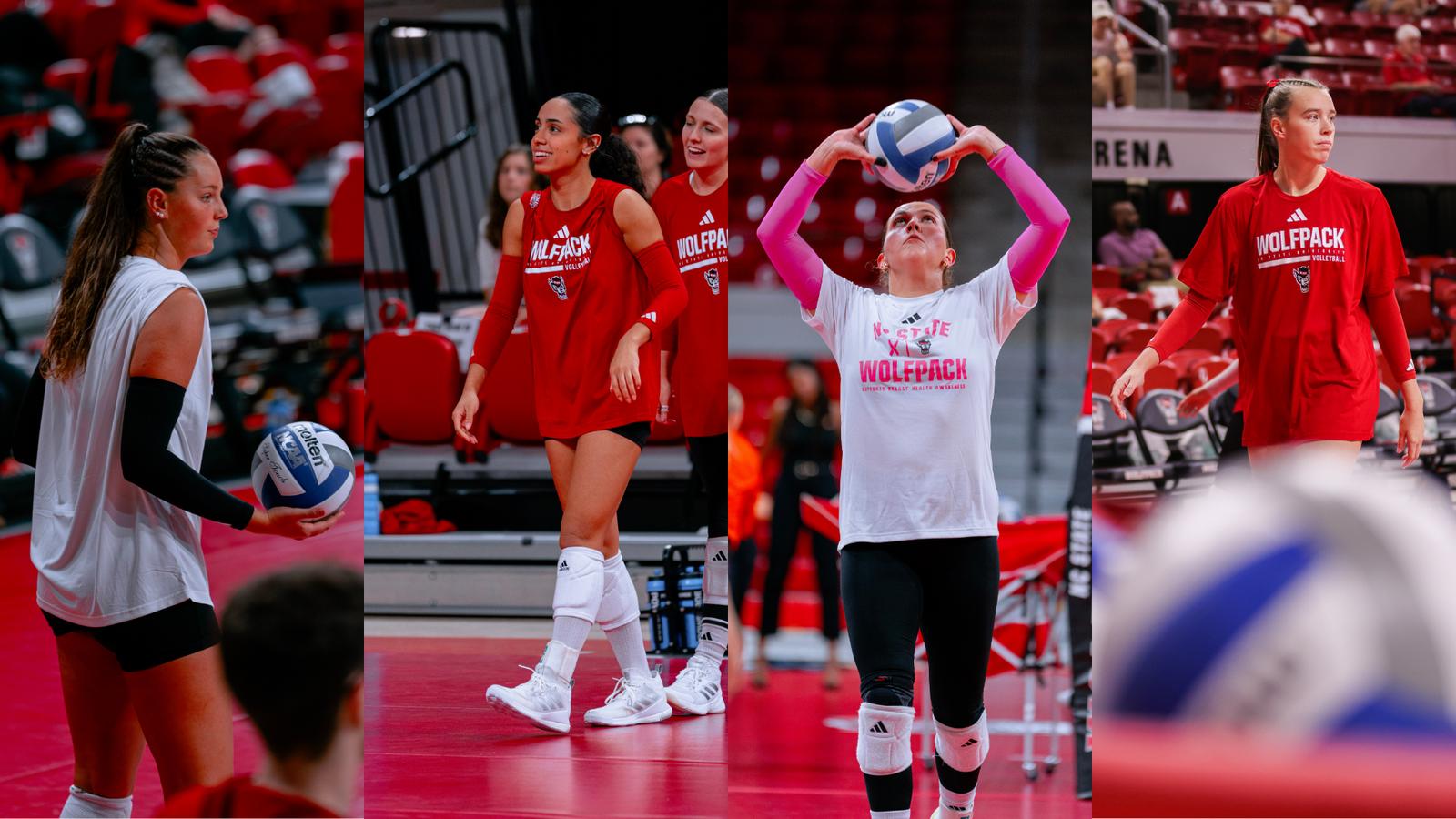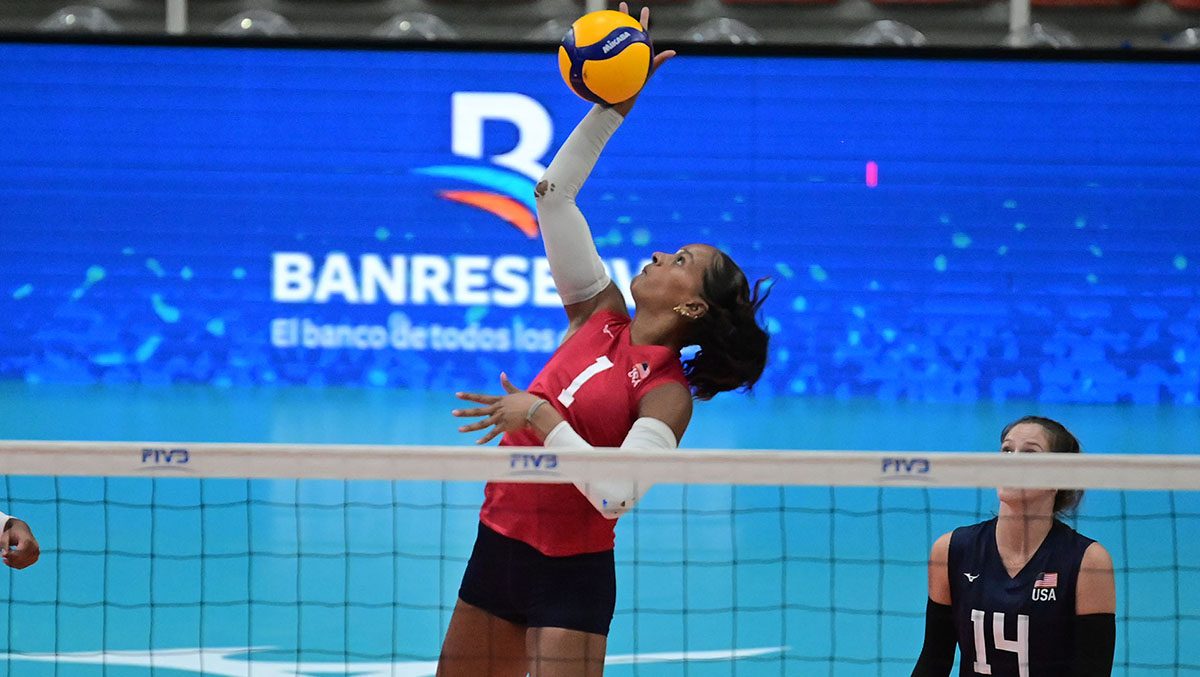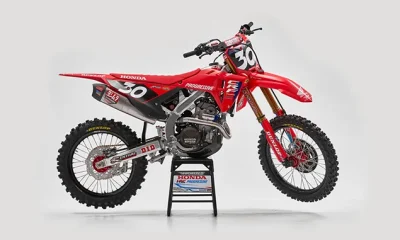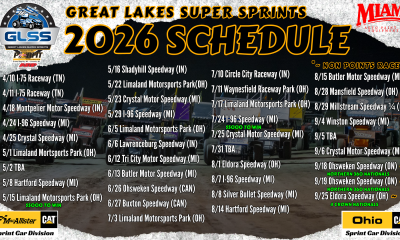Sports
Twins Daily Minor League Starting Pitcher of the Month


.jpg.0dc16d73baa417dad72559700f886f48.jpg)
Twins Video
Before we get to the list, let me quickly explain how I like to analyze starters. My balancing has shifted: previously, I emphasized innings, but I think that led me to overvalue older pitchers and downplay efficiency. You’ll see that has changed in this list. I’ve rewarded pure dominance, as I questioned how much I should value extra innings if the tradeoff is much worse run prevention.
Finally, defining a “starting pitcher” in the minors is somewhat nebulous, as bulk hurlers will often get time in as a starter, and reliever depending on what the team needs. My line is this: a relief outing isn’t completely thrown out, but it weighs less than a start. Let’s get to the honorable mentions.
Honorable Mentions:
Dasan Hill, A Fort Myers – 1.93 ERA, 9 ⅓ IP, 5.14 FIP, 31.6 K%
Dasan Hill survived an injury scare early in the month to continue baffling A-ball hitters as a teenager. That innings total is far too low, though, so he will have to settle for an honorable mention. Also, cut down on the walks, please.
Andrew Morris, AAA St. Paul – 3.81 ERA, 26 IP, 4.93 FIP, 19.1 K%
I don’t know if Andrew Morris deserves to be here given that he allowed a .349 batting average in May, but his run prevention was mostly solid, and he was legitimately nasty on the 18th, so here he sits.
Eli Jones, A Fort Myers – 3.74 ERA, 21 ⅔ IP, 3.52 FIP, 23.3 K%
An 8th-rounder out of the University of South Carolina in 2024, Eli Jones augured mild April success with a respectable May, totaling a pair of five-frame, one-earned run starts in the month.
Chase Chaney, A+ Cedar Rapids – 3.52 ERA, 23 IP, 4.79 FIP, 17.3 K%
Chase Chaney was a Cedar Rapids workhorse in May, pitching at least five innings in every start, with a trio of outings going six. There’s a dearth of Twitter videos from him this year, but his former team has a deep supply of cinematic shots of him pitching, so please enjoy.
5. Jeremy Lee, A+ Cedar Rapids – 3.12 ERA, 17 ⅓ IP, 2.26 FIP, 19.2 K%
Our first member of the list proper, Jeremy Lee rebounded from a dreadful April—one that saw three games with an ERA over 13—to post a truly impressive May. He tossed five innings of one-run ball on the 4th, stumbled a little on the 10th, and returned for an outing on the 16th shockingly similar to his one to start the month. He concluded May with a pair of solid relief outings. Add it all up and you get one of the best starting pitcher performances in the system. He only walked one batter all month!
Lee joined the Twins 13th-round pick out of South Alabama in 2023 (somehow he’s not the only Alabamanian who made the list). You may remember the school as the alma mater of Twins’ 70’s catching stalwart Glenn Borgmann. Lee crushed his competition at Fort Myers in 2024, yet found Midwest league hitters uninviting. Repeating the level might be the catalyst needed to jumpstart for success for the righty.
4. Trent Baker, AA Wichita – 3.18 ERA, 22 ⅔ IP, 2.32 FIP, 28.9 K%
Trent Baker might be the story of the minors so far. A Rule 5 pick from the Cardinals organization—on the minor league side, that is—Baker slid gracefully into the Wind Surge rotation, where he holds a season ERA of 2.84 across 44 ⅓ innings with peripherals that support his performance.
The turning point for Baker appears to be refined command. He walked 12% of batters in 2024 with the Cardinals’ AA team. So far, that total has been halved—he sits at 6% as of the beginning of June.
And he was tantalizingly close to ending May with an even stronger bid for starter of the month. His first four starts were excellent, but a four-run four-inning appearance on the month’s final day knocked his stats to merely great, not transcending. Still, his play so far has been inspiring. He looks to be a rock in the Wichita rotation.
3. Aaron Rozek, AA Wichita – 2.52 ERA, 25 IP, 2.95 FIP, 21.0 K%
Finally, a Minnesotan. The Burnsville lefty has been a regular in the Twins organization since being plucked from indy ball in 2021. Wherever the team needs him, he’s there: Rozek has at least 50 innings at three separate levels, with the bulk of his work coming as a Wichita Wind Surge. Shoot, he might even qualify for a pension with them at this point.
Rozek’s calling card has been length. Few in the system can gobble frames like he can. May was no different: he totaled the second-most innings of all pitchers mentioned in this article, accruing at least 13 outs in every outing. He topped out with a six-inning start on the 9th.
He’s also one to consistently tweet baseball thoughts if you’re interested in reading what a ballplayer has to say about the game.
Rozek was close to taking one of the top two spots. The question asked is this: how valuable is 6 ⅔ innings with about a 5.45 ERA, or 10 ⅔ innings with about a 4.36 ERA? Those are the totals that separate him from the players ahead. It’s an interesting debate, and I fell on the side of efficiency.
2. Christian MacLeod, AA Wichita – 1.47 ERA, 18 ⅓ IP, 3.09 FIP, 24.7 K%
It appears that Christian MacLeod decided allowing runs is for suckers, and MacLeod is no sucker. His season ERA is a miniscule 0.95, albeit across just 28 ⅓ innings as he started 2025 injured. Still, his numbers cannot be denied, and May was a deeply impressive month for the lefty.
A champion with the Mississippi State Bulldogs, MacLeod joined the Twins as a 5th-round pick in the 2021 draft. His pitching quality is evident; yet, injuries limited him to enter the season with just 164 ⅔ minor league innings. The lack of workload is the main factor that kept him on the outskirts of major prospect conversations. He was a tertiary mention at best.
He’s clearly healthy now. MacLeod started the month with a relative stinker before rattling off three straight scoreless starts, allowing just five hits in 11 ⅔ innings. Control was the only bugaboo in his game: the 25-year-old walked 13% of hitters in the month, as it seemed like the best strategy a batter could employ against him was to wait out a possible free pass. It hardly mattered; just three runners scored against him. He was so good that I’m still not entirely sure I made the correct decision in anointing him only the second-best starter of the month.
1. David Festa, AAA St. Paul – 1.26 ERA, 14 ⅓ IP, 1.35 FIP, 36.6 K%
Given his status at the beginning of the month, I’m sure David Festa himself wouldn’t have predicted that he’d win this award. The righty dominated 5 ⅔ frames with one earned run on May 6th, then missed his next start due to ominous “arm fatigue.” Fans groaned and prepared for the worst. Yet, the malaise subsided after two weeks, and Festa returned for 3 ⅔ successful innings, again allowing a lone earned run.
A phenomenal five-shutout inning start on the 29th concluded what eventually became a tremendous month for the youngster—one that saw a critical adjustment integrate flawlessly into his game.
Festa’s four-seam fastball had proven irresistible to major league hitters, who battered the offering with Ted Williams-like vigor. The pitch clearly wasn’t going to cut it, so Festa and the Twins worked to add a sinker into his mix. Evidently, he felt uncomfortable with the pitch early on, as he threw it just 10 times in the bigs, but recently he’s let the new weapon rip; Festa threw 22 of them in his last start—a third of all his pitches that day—as opposed to just 11 four-seamers. We will see what the pitch will do in the majors. Minor leaguers, however, have spoken through Festa’s stats, and they tell us this: they would rather see the New Jerseyian practice his craft in the big leagues.
Sports
Four Members of Pack Volleyball Earn Academic All-District Honors

The award recognizes student-athletes for their performance in the classroom in addition to on the court. To qualify, one must have a grade point average of 3.5 and be at least a sophomore both academically and athletically.
Lily Cropper, Sydney Daniels, and Elaisa Villar earn the honor for the first time in their career while Courtney Bryant earns it for the second year in a row.
Bryant is the first student-athlete to earn the honor consecutively since Brie Merriweather did so in 2012 and 2013.
Cropper, Villar and Byrant appeared in all al 30 matches for the Wolfpack this season, while stuffing the stat sheet for their respective positions.
Daniels also appeared in all 30 matches for the Pack as a defensive specialist and wore the libero jersey for eight of those matches.
Sports
Catherine Burke Brings Depth at Middle Blocker for Demon Deacons Volleyball

Burke will join the Demon Deacons’ roster for the 2026-27 school year with one final season of eligibility remaining.
Catherine Burke | 6-3 | Middle Blocker | Glenview, Ill. | Penn State
Competing as a middle blocker, Burke comes to DEACTOWN from Penn State, where she spent the last three years. In 2024, she was a member of the Nittany Lions’ national championship roster while also landing a spot on the Academic All-Big Ten Team. An Illinois native, Burke ranked as the No. 86 recruit overall and No. 4 in the state by PrepDig.com as a four-year standout at Loyola Academy. Within club volleyball, she played multiple years with both Wildcat Juniors and Adversity VBC.
Personal
Catherine is the daughter of Jim and Erin Burke, as her father, Jim, played lacrosse at Colby College. She has one older brother, Jack, who played hockey at Navy, one older sister Annabelle, who played lacrosse at Michigan, and three younger sisters: Emma, Nora, and Lily.
From Coach Hulsmeyer
“I’m very excited about the addition of Catherine to our program. She has consistently performed at the highest level against the best players in the country. It is all those players like her who work behind the scenes that create championships as it did for Penn State. A special thanks to Tina Readling on our staff, who was able to see the contributions Catherine made and what she brings to Wake Forest as a graduate student.”
Follow the Deacs
Twitter | Instagram | Facebook | GoDeacs.com
Sports
Baylor’s Ezekiel one of three finalists for The Bowerman

GRAPEVINE, Texas – Baylor’s first-ever finalist for college track & field’s most prestigious honor, reigning NCAA outdoor 400-meter hurdles champion Nathaniel Ezekiel will join the two other male finalists and three female semifinalists for The Bowerman Presentation on Thursday at the Gaylord Texan Resort & Convention Center.
Hosted by ESPN broadcaster and former University of Indiana runner Larra Overton, The Bowerman Presentation will be streamed live by RunnerSpace beginning at 6:30 p.m. with the red-carpet entrance to the Grapevine Ballroom. The Bowerman is given annually to the top collegiate track and field men’s and women’s athlete of the year.
A nine-time All-American and six-time Big 12 champion, Ezekiel capped off his collegiate career by winning the NCAA outdoor 400-meter hurdles title with a school-record time of 47.49. He also broke the school indoor mark in the 400 meters (44.74), winning the silver medal at the 2025 NCAA Indoor Championships.
Ezekiel, who represented his native Nigeria at the 2024 Olympics in the 400 hurdles, turned pro this summer and finished fourth at the World Track and Field Championships with a Nigerian-record time of 47.11.
The other male finalists are Ja’Kobe Tharp from Auburn, who won NCAA championships in the indoor 60-meter hurdles and outdoor 110-meter hurdles; and Arkansas sprinter Jordan Anthony, who swept NCAA titles in the indoor 60 meters and outdoor 100 meters.
On the women’s side, the finalists are distance runner Pamela Kosgei from New Mexico, 3,000-meter steeplechaser Doris Lemngole from Alabama and 400-meter hurdler Savannah Sutherland from Michigan. Five of the six schools have finalists for the first time in their programs’ history.
Last year’s winners were University of Texas decathlete Leo Neugebauer and record-setting distance runner Parker Valby from Florida.
The RunnerSpace live stream is available at: https://the-bowerman-presentation.runnerspace.com/eprofile.php?event_id=14920&do=videos&video_id=436664
For the latest news on the Baylor track and field team all year long, follow its official Facebook, X and Instagram accounts: @BaylorTrack.
– BaylorBears.com-
Sports
Three-Time National Champion Sits Atop Women’s Volleyball Postseason Poll
KANSAS CITY, Mo. – The 2025 NAIA Women’s Volleyball Postseason Poll is topped by Indiana Wesleyan after the Wildcats won their third Red Banner in three years.
Both Indiana Wesleyan and Dakota Wesleyan (S.D.) made moves up seven spots in the postseason poll. Nine other teams made a move up, including Cornerstone (Mich.) and Huntington (Ind.), who joined the Top 25 from receiving votes. Three teams remained at the same rank as the final season edition of the Top 25: Concordia (Neb.), Corban (Ore.) and Mobile (Ala.).
Receiving Votes: Northwest (Wash.) 44, Park (Mo.) 43, Taylor (Ind.) 35, Southern Oregon 29, Walla Walla (Wash.) 28, Marian (Ind.) 20, Montana-Northern 19, Nelson (Texas) 14, Columbia International (S.C.) 14, Grand View (Iowa) 12, Lindsey Wilson (Ky.) 5, MidAmerica Nazarene (Kan.) 3, OUAZ(Ariz.) 3, Bethel (Kan.) 2
Poll Methodology
- The national poll is for publicity purposes only and does not influence the selection process for national championship consideration.
- A panel of head coaches representing each conference and the Continental Athletic Conference (Independents) votes in the poll.
- The Top 25 teams are selected using a points-based system:
- 30 points for a 1st-place vote, 29 for 2nd, 28 for 3rd, and so on.
- The highest and lowest rankings received by each team are discarded before final tallying.
- Teams receiving only one point are not listed as “receiving votes.”
- For the Preseason Poll, there is no “previous ranking” column since it is the initial poll and differs from the prior rating system.
Key: RV – Receiving Votes, NR – Not Ranked, ▲– Climbed, ▼– Dropped, ● – Steady
Sports
KWHS senior Madyn Waring signs to Oregon State for track & field

CASPER, Wyo. –– Kelly Walsh High School athlete Madyn Waring will compete in track and field at Oregon State University.
The KW senior held a signing ceremony on Tuesday with family and classmates to announce the signing, which will take her to Corvallis, Oregon, a region known for its quality college track and field athletics.
“It’s really exciting,” she said. “They compete a lot of their outdoor meets at Hayward Field in Eugene, which is like a track capital of the world. So many people don’t get to compete there in their lifetimes, so to be able to compete there is really exciting.”

As an added bonus, OSU has joined the PAC 12 starting next year. “Maybe having a chance at that PAC 12 title is really cool,” she added.
Waring said that OSU is particularly unique because they feature only women’s track, with no men’s team at all. “I like to have the attention on me, as you most likely know,” she joked while addressing the assembled crowd. “That was kind of a bonus.”
Waring said she had considered a number of other schools over the previous year, including an Ivy League school and even the Navel Academy. She made a visit to Boise State at one point, but was quickly won over by OSU. “I decided that it was the better fit and aligned more with what I was wanting in a college experience.”

Waring’s high school athletic skills were strong on the basketball and volleyball courts, but she fell in love with track & field, and decided it offered more options in her college career. “It was always [more] about the school than the sport,” she said.
“What I like about track is it’s all on me,” she continued. “So while coaching can help me a lot and I have teammates, it really comes down to how I perform and the effort I put in myself.”
She’s looking at competing in the heptathlon, which includes seven events over two days. “I don’t think I would ever get bored, there’s always something to grow in,” she said, adding that she has never tried the javelin since Wyoming doesn’t offer that activity. “I think my volleyball arm might lend itself well to that,” she said.
Outside of sports, Waring is excited to pursue a degree in environmental engineering, and OSU has been listed as an R1 research institution by the Carnegie Classification of Institutions of Higher Education.
“It checks all the boxes in that way,” said Waring.

Related
Sports
NTDP/WNT Athletes Ready to Shine in 2025 NCAA Women’s Volleyball Semifinals

COLORADO SPRINGS, Colo. (Dec 16, 2025) – From the NTDP courts to the NCAA semifinals, the impact of USA Volleyball’s development pipeline is on full display once again. Athletes and coaches from all four teams will bring rich experience from NTDP programs and U.S. national teams, showing how the pathway continues to prepare players and staff for the sport’s biggest stages.
The NCAA semifinals are set for Thursday, Dec. 18. No. 1 Pitt and No. 3 Texas A&M square off in the first semifinal at 6:30 p.m. ET, followed by No. 1 Kentucky and No. 3 Wisconsin, 30 minutes after the conclusion of the first match. Both matches are live on ESPN.
The final is December 21 at 3:30 p.m. ET on ABC.
Pitt
Pitt’s roster is led by 2025 U.S. Women’s National Team athlete Olivia Babcock, who competed with the team during Volleyball Nations League. She also helped the senior national team earn silver at the 2024 NORCECA Pan American Cup Final Six.
Fifty-eight percent of Pitt’s NTDP-eligible roster (international athletes not included) have either participated in an NTDP Training Series or with an age-group national team.
- Blaire Bayless: 2024-25 U21 National Team (2024 U21 Continental Championships, gold; 2025 U21 Pan Am Cup, gold); 2023 U19 National Team (2023 Pan Am Cup, gold and MVP)
- Abbey Emch: 2025 U19 National Team (2025 U19 World Championship, silver)
- Bre Kelley: 2022-23 U21 National Team (2022 U21 Pan Am Cup, gold; 2023 U21 Pan Am Cup, gold); 2018 U18 National Team (2018 U18 Continental Championship, gold)
Babcock, Bayless, Emch, Sophia Gregoire, Ryla Jones and Haiti Tautua’a are all NTDP Training Series athletes.
Head coach Dan Fisher brings extensive USA Volleyball history to Pitt’s sideline, including coaching stints with the U.S. Men’s and Women’s National Teams. He’s also led age-group national teams to multiple Pan American Cup golds. Fisher and assistant coaches Kamalani Akeo and Kellen Petrone hVW also both coached with NTDP.
Texas A&M
Texas A&M’s emergence this season reflects its deep ties to NTDP.
Ifenna Cos-Okpalla was MVP and Best Blocker of the gold-medal winning 2025 U23 Pan Am Cup team, and Logan Lednicky was part of the 2025 Women’s National Team, competing in weeks one and two of Volleyball Nations League. Kirra Musgrove was on the 2024 Girls U19 National Team.
Sixty-nine percent of TAMU’s NTDP-eligible roster (international athletes not included) have either participated in an NTDP Training Series or with an age-group national team.
Musgrove, Addi Applegate, Megan Fitch, Lexi Guinn, Margot Manning, Taryn Morris, Morgan Perkins, Ava Underwood and Maddie Waak are all NTDP Training Series athletes.
Head coach Jamie Morrison brings world-class credentials from his years with both the U.S. Men’s and Women’s National Teams, as well as leading multiple age-group national teams to gold medals.
TAMU Director of Analytics Joe Skinner is a former coach with the U.S. Men’s Sitting National Team (helping lead them to the 2016 Paralympic Games) and has also coached with NTDP, as has assistant coach Jeff Fiorenza.
Kentucky
Kentucky continues its proud NTDP tradition, led by Brooklyn DeLeye, MVP of the 2024 and 2025 U21 NORCECA events, and Eva Hudson, who played for the 2025 U.S. Women’s U23 National Team and the 2024 senior national team. DeLeye was also part of the 2023 U19 National Team.
Seventy-one percent of Kentucky’s NTDP-eligible roster (international athletes not included) have either participated in an NTDP Training Series or with an age-group national team.
- Eva Hudson: 2025 U23 National Team (U23 Pan Am Cup, gold); 2024 Women’s National Team (Pan Am Cup Final Six, silver); 2024 Women’s National Team Spring Training; 2023 U21 National Team (U21 Pan Am Cup, gold)
- Brooke Bultema: 2025 U23 National Team
- Molly Tuozzo: 2025 U21 National Team
Hannah Benjamin, Bultema, Jordyn Dailey, Kassie O’Brien, Asia Thigpen, Kennedy Washington and Georgia Watson are all NTDP Training Series athletes.
Associate head coach Meredith Jewell and assistant coach Kyle Luongo have both worked within NTDP.
Wisconsin
Wisconsin showcases a strong NTDP background, with Carter Booth also having senior U.S. National Team experience.
Sixty-nine percent of Wisconsin’s NTDP-eligible roster (international athletes not included) have either participated in an NTDP Training Series or with an age-group national team.
- Carter Booth: 2024 Women’s National Team (Pan Am Cup Final Six, silver); 2020-21 U20 National Team; 2019 U18 National Team (U18 World Championship, gold)
- Mimi Colyer: 2023 U21 National Team
- Charlie Fuerbringer: 2025 U21 National Team; 2023 U19 National Team (U19 World Championship, gold); 2022 U19 National Team
- Natalie Wardlow: 2025 U19 National Team; 2024 U19 National Team
- Aniya Warren: 2025 U19 National Team; 2024 U19 National Team (U19 Continental Championship, gold)
Colyer, Grace Egan, Fuerbringer, Addy Horner, Madison Quest, Kristen Simon, Wardlow and Warren all have NTDP Training Series experience.
Assistant coach Lauren Carlini, a 2024 Olympian and longtime Women’s National Team setter, brings elite experience to the Badgers’ bench, and assistant coach Brittany Dildine has worked with NTDP.
From collegiate courts to the international arena, NTDP athletes continue to elevate the level of play. As the NCAA semifinals unfold, these connections underscore USA Volleyball’s commitment to developing world-class talent, with coaches and players alike from youth programs to the highest stages of competition.
-

 Motorsports3 weeks ago
Motorsports3 weeks agoJo Shimoda Undergoes Back Surgery
-

 Motorsports1 week ago
Motorsports1 week agoSoundGear Named Entitlement Sponsor of Spears CARS Tour Southwest Opener
-

 NIL2 weeks ago
NIL2 weeks agoBowl Projections: ESPN predicts 12-team College Football Playoff bracket, full bowl slate after Week 14
-

 Rec Sports3 weeks ago
Rec Sports3 weeks agoHow this startup (and a KC sports icon) turned young players into card-carrying legends overnight
-

 Rec Sports3 weeks ago
Rec Sports3 weeks agoRobert “Bobby” Lewis Hardin, 56
-

 NIL3 weeks ago
NIL3 weeks agoIndiana’s rapid ascent and its impact across college football
-

 Motorsports3 weeks ago
Motorsports3 weeks agoPohlman admits ‘there might be some spats’ as he pushes to get Kyle Busch winning again
-
Sports3 weeks ago
Wisconsin volleyball sweeps Minnesota with ease in ranked rivalry win
-

 Motorsports1 week ago
Motorsports1 week agoDonny Schatz finds new home for 2026, inks full-time deal with CJB Motorsports – InForum
-

 Motorsports3 weeks ago
Motorsports3 weeks agoIncreased Purses, 19 Different Tracks Highlight 2026 Great Lakes Super Sprints Schedule – Speedway Digest






























